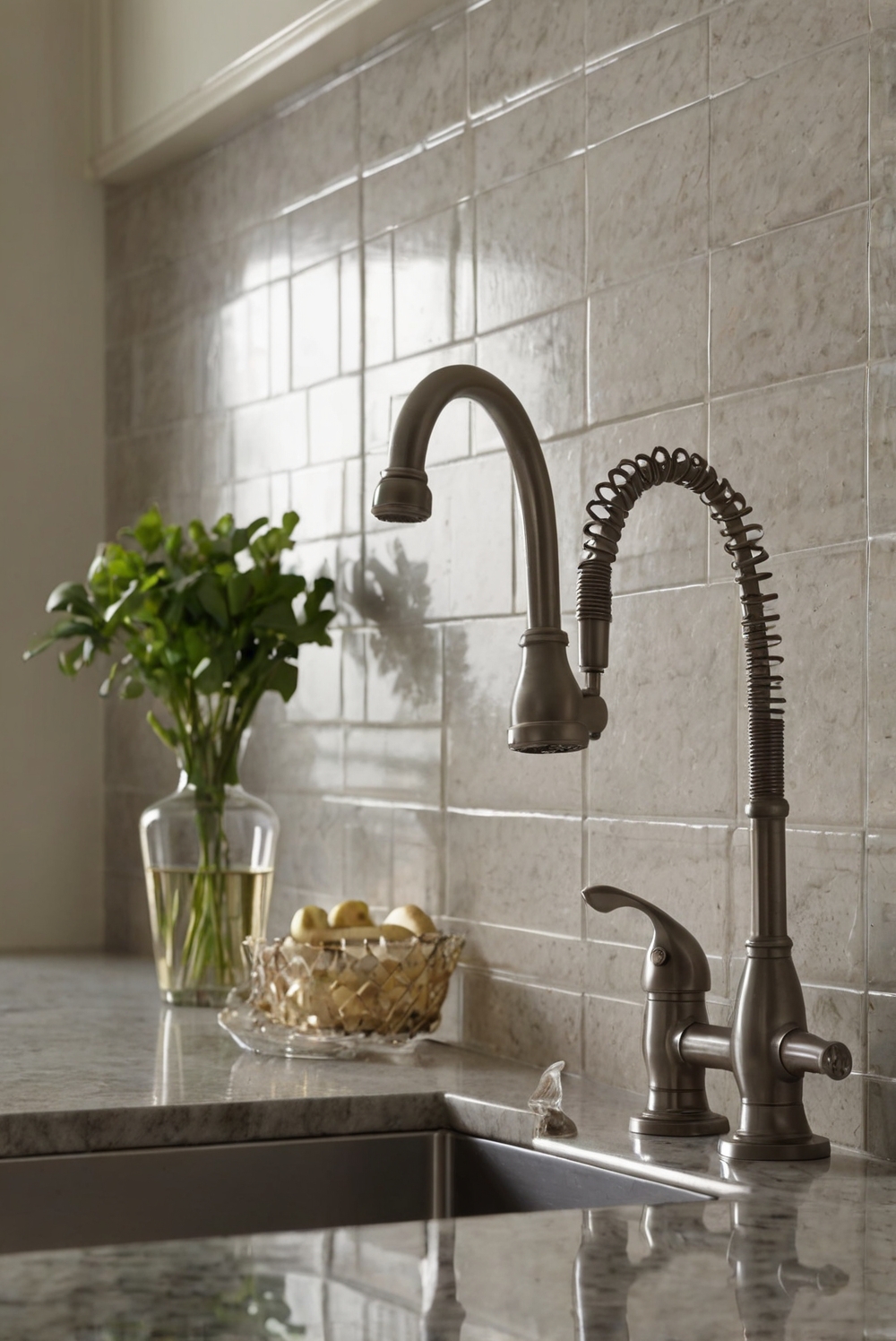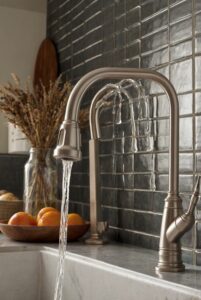Join us for a look into our daily routine as interior designers, focusing on how to troubleshoot common kitchen faucet problems. Explore decor tips and tricks!
To troubleshoot common kitchen faucet problems, follow these steps as part of your home decor routine:
1. Check for low water pressure by examining other faucets in your home.
2. Inspect for leaks or drips by looking under the sink or around the base of the faucet.
3. Clean the aerator to remove mineral build-up and improve water flow.
4. Tighten loose connections or handle screws to stop any wobbling.
5. Replace worn-out seals or cartridges to fix dripping issues.
6. Make sure the water supply valves are fully open to ensure proper water flow.
7. Consider upgrading to a new faucet if problems persist despite troubleshooting efforts.
Prioritizing these maintenance tasks can enhance your home interior and keep your kitchen functioning smoothly.
Leaky Faucet:
If you are dealing with a leaky faucet, the most common culprit is a worn-out O-ring or washer. To fix this issue, you will need to disassemble the faucet and replace the damaged part. Make sure to turn off the water supply before starting the repair. Once you have replaced the O-ring or washer, reassemble the faucet and test for leaks.
Low Water Pressure:
Low water pressure in the kitchen faucet can be caused by various factors such as mineral build-up, a clogged aerator, or a faulty cartridge. Start by cleaning the aerator to remove any debris that may be blocking the flow of water. If that doesn’t solve the problem, you may need to replace the cartridge or check for other obstructions in the water line.
Sprayer Malfunction:
If your sprayer is malfunctioning, check for clogs in the sprayer head or hose. Remove the sprayer head and clean it thoroughly to remove any debris that may be causing the issue. If the problem persists, you may need to replace the sprayer head or hose altogether. Make sure to follow the manufacturer’s instructions when installing the new parts.
Dripping Faucet:
A dripping faucet is not only annoying but can also lead to water wastage and higher utility bills. To fix a dripping faucet, start by identifying the type of faucet you have (ball, cartridge, ceramic disk, or compression) and then proceed to replace the faulty parts such as the O-ring, washer, or cartridge. Make sure to turn off the water supply before starting the repair and follow the specific instructions for your faucet type.
Noisy Faucet:
If your faucet is making noise when turned on or off, it could be due to loose parts or water hammer. Check for loose connections and tighten any nuts or bolts that may be causing the noise. If the problem persists, you may need to install a water hammer arrester to absorb the shock waves and prevent the noise. Consult a professional plumber if you are unsure how to proceed.
In conclusion, troubleshooting common kitchen faucet problems requires a systematic approach and a basic understanding of how faucets work. By following the steps outlined above, you can easily identify and fix issues such as leaky faucets, low water pressure, sprayer malfunctions, dripping faucets, and noisy faucets. Remember to always turn off the water supply before attempting any repairs and consult a professional plumber if you encounter any difficulties. With the right tools and knowledge, you can keep your kitchen faucet in top working condition and avoid costly repairs in the future.
1. How do I fix a leaky kitchen faucet?
To fix a leaky kitchen faucet, start by turning off the water supply to the faucet. Next, disassemble the faucet handle to access the cartridge or O-ring that may be causing the leak. Inspect the parts for damage and replace any worn-out components. Reassemble the faucet and turn the water supply back on to check for leaks.
2. Why is my kitchen faucet making a loud noise?
A loud noise coming from your kitchen faucet could be due to a loose washer, worn-out valve, or high water pressure. To troubleshoot this issue, check the faucet handle and tighten any loose parts. If the noise persists, consider installing a water pressure regulator to reduce the pressure and minimize the noise.
3. How can I fix low water pressure in my kitchen faucet?
Low water pressure in a kitchen faucet can be caused by a clogged aerator, mineral buildup in the faucet, or a faulty cartridge. To troubleshoot this problem, remove the aerator and clean it thoroughly to remove any debris. If the water pressure is still low, check the faucet cartridge for damage and replace it if necessary.
4. What should I do if my kitchen faucet is dripping continuously?
If your kitchen faucet is dripping continuously, it could indicate a worn-out washer, O-ring, or cartridge. Start by turning off the water supply to the faucet and disassembling the handle to access the faulty component. Replace the damaged part and reassemble the faucet to stop the dripping.
5. How do I fix a kitchen faucet that is not dispensing hot water?
If your kitchen faucet is not dispensing hot water, check the hot water supply valve under the sink to ensure it is fully open. If the valve is open and the faucet still does not dispense hot water, the issue may be with the faucet cartridge or a blockage in the hot water line. Inspect the cartridge for damage and replace it if needed. If the problem persists, consider calling a professional plumber for further assistance.




